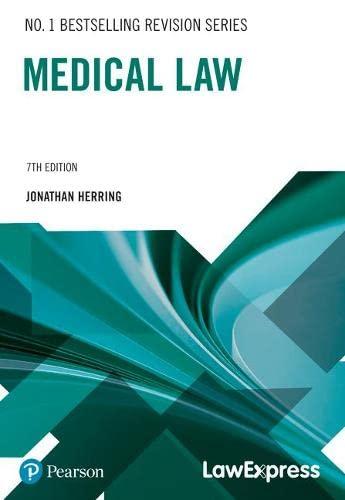Question
1. The Supreme Court in their 1978 Pacifica v. FCC ruling upheld the agency's definition of Indecency as it pertains to the broadcast media; what
1. The Supreme Court in their 1978 Pacifica v. FCC ruling upheld the agency's definition
of Indecency as it pertains to the broadcast media; what is that specific definition; and,
explain the 'Fleeting references' policy the FCC attempted to adopt in 2004, but was
struck down by the Second Circuit Court of Appeals in 2010:
2. Briefly explain the two cases involving the Pittsburgh Press and the Pittsburg
Commission on Human Relations(1973 and 1979), and why were the rulings different
(one by the U.S. Supreme Court and the other by the Pennsylvania Supreme Court):
3. Explain the Equal Time Rule in detail, including the term 'Use of a station'....lowest rate charge...and the exemptions to the rule:
-2-
4. Explain the current 'population cap' limit on TV station ownership; and, since the
Telecommunicatons Bill of 1996, what's the rule on nation-wide radio station
ownership.....and, what's the maximum number of radio stations one company may own
in one market:
5. List the components of the Childrens' TV Act that were enacted between 1990 and 1996:
6. What were the KEY components of both the Satellite Home Viewer Act of 1999, and the
Satellite Home Viewer Extension & Reauthorization Act of 2004(what specific phrases
were used in those pieces of satellite TV legislation:
-3-
7. What was the significance of the rulings in Bigelow v. Virginia and the 'Virginia
Pharmacy Case'....what important precedent did the Supreme Court set in each
of those cases:
8. Explain the four-prong test for protection of commercial speech and the constitutionality of government restrictions as put forth in the 'Central Hudson Case'(1980):
9. Explain the 'UHF Discount Rule'(established in 1985, repealed in 2016, then reinstated
in 2017)as it pertains to TV station ownership:
-4-
10. Under the Equal Time Rule, which candidates MUST be sold time for political messages;
and, what are 'Third-Party' ads:
****************************************Extra Credit 10 pts.*********************************
1. The legal difference between 'Commercial Speech' and 'Core Speech' is illustrated in the
1973 Supreme Court decision Miami Herald v. Tornillo; briefly explain this case and the court's ruling: (5 points)
2. What was the KEY component of the Reno v. ACLU(1997)ruling concerning obscenity
and the internet: (5 points)
Step by Step Solution
There are 3 Steps involved in it
Step: 1

Get Instant Access to Expert-Tailored Solutions
See step-by-step solutions with expert insights and AI powered tools for academic success
Step: 2

Step: 3

Ace Your Homework with AI
Get the answers you need in no time with our AI-driven, step-by-step assistance
Get Started


